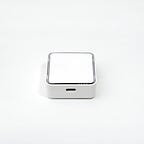Digital Health Techs That Will Stay After COVID-19
COVID-19 pandemic will one day come to an end. But its effects will last forever.
Like every pandemic, COVID-19 will come to an end. Not a question of if, but when. Rather than completely getting rid of it, as there is no vaccine available yet, the world has slowly learned to live with it.
Dubai recently became the first country in the world to reopen its borders to tourism again, but with social distancing in mind. As long as you test negative for the COVID-19 test, you will not be required to quarantine for 14 days. Masks are mandatory, hotels rooms are sanitized, and restaurants and shops now measure your temperature before you can enter. Lines are drawn on the floor to ensure a safe distance from one another.
Emirates has also resumed flights to many parts of the world, but their plane can only be at 70% capacity. Flight attendants also have their uniforms changed to protect their passengers and themselves. Providing a medical report to prove you’re healthy before flying is now the new normal at every airport in the world.
Some of the digital health technologies that existed prior to COVID-19 were not known to many. Many had challenges getting FDA approvals and the world was quite simply not ready for it yet. That all change this year when the pandemic greatly accelerated the unexpected acceptance and adoption of digital healthcare, proven it to be indispensable in this crisis.
Governments and people around the world are using interactive maps to track the spread of the virus; smartphone tracking is gaining popularity as an effective tracing and containment method; mobile apps are created to monitor those in quarantine, requiring them to report their daily log to a healthcare specialist. With so many people stuck indoors, many look for alternatives to stay healthy using smart devices and interventions (e.g. Noom). The telemedicine market exploded, with many going online to see their doctors. All these are hallmarks of digital healthcare and therapeutics.
Here are four technologies that will remain in a post-COVID-19 world:
1. Disinfectant Robots
Instead of manual disinfection done by humans, which requires workforce mobilization and increases exposure risk to patients, autonomous or remote-controlled robots can lead to cheaper, fast, and effective disinfection. UVD Robots shipped hundreds of its disinfectant robots around the world during the pandemic. Others like Violet can completely disinfect a CT scanner room in 15 minutes (a process that takes a human 1 hour to perform). Besides saving time and stopping the spread of COVID-19, these robots will help to prevent hospital-acquired infections.
2. Artificial Intelligence Predicting Future Outbreaks
Toronto-based Bluedot beat both the WHO and the CDC when they issued warnings on 6th January about the COVID-19’s spread. It correctly predicted the virus’s path from Wuhan to Tokyo using big data analytics. It’s A.I. scoured foreign-language news reports, animal and plant disease networks, all travel flight pathways, the probability of catching the flu, and official proclamations to give the world advance warning to avoid danger zones like Italy, Iran, and Spain. There is a lot of optimism that data from SARS in 2003, MERS in 2015, and now COVID-19 will help the world be better prepared for future outbreaks.
3. Remote Care and DTx
It’s unfortunate that the pandemic actually accelerated telemedicine and digital therapeutics on the fast track for mainstream adoption. Before the pandemic, only 1 in 10 US patients uses them. But with COVID-19, usage of remote care and DTX increased up by 158%.
Lemonaid offers online consultation and at-home drug delivery. Millions of people are beginning to take their healthcare online. SolvHealth has seen a 3,400% increase in video consultations and a 2,575% increase in telemedicine doctors. Capsule has seen a 500% increase in new remote patients. Adopting remote care and DTx empower patients with the data from health trackers they can share with physicians, giving additional insights into their health. Moreover, a bigger focus on at-home testing can be favoured to reduce waiting time.
4. 3D Printing Medical Equipment
COVID-19 showed how flawed our supply chain is in terms of securing masks, gloves, hazmat suits, and ventilators. Due to the severe shortage of some of these items, healthcare workers have been in a position where they had to choose between whom to save and die. Formlabs is helping by 3D printing testing swabs. NASCAR is 3D printing ventilators and protective equipment for healthcare workers.
Soon, your doctor may prescribe you an app instead of a pill. And a robot might be the employee of the month!
To inquire more about Brilliant & Company, please do not hesitate to drop us a line:
- CEO / Ryan Yun / ryan.yun@brilcom.com
- Global Marketing Manager / Steve Tan / steve.tan@brilcom.com
